|
Interview by Juanita Canzoneri Deb Hager joined Commonwheel about the same time as the floods hit Manitou Springs in 2013. She had been in Green Horse Gallery in Manitou Springs prior to applying to the co-op. As a child Deb was always playing in the dirt around her home. The neighborhood of Penn Hills outside Pittsburgh, PA was under construction so there were dirt piles everywhere. “I had the most gracious mom. I’d be out playing in the dirt, making swimming pools for my Barbies. And when it was time to come in for lunch, she’d just hose us off, we’d eat lunch, and then we’d go back out to the dirt piles.” Deb attended Indiana University in Pennsylvania as an art major. Her passions were for drawing and painting. When she had to take a 3-D class she took a clay class and wasn’t very happy about it. “I kept practicing and practicing, and I was the worst one in my class,” Deb says. “Everyone else was centering (their wheel-thrown pots), but me.” One day she was so frustrated with her progress the professor found her crying in her clay. He was able to show her where she had been getting stuck and, with that guidance, she just took off. “Because it didn’t come easy to me, because I had to work so hard at it” she says, “I kind of fell in love with it.” Once she learned wheel throwing, she became mesmerized by the whole process. “You have this nothing lump and then you make this something that people are using.” Deb’s husband, Denver, was in the military and wherever they were stationed she would teach classes in ceramic shops and teach art lessons just to keep her hand in it. When they moved to Colorado in 1995, she became a wheel-throwing potter at Van Briggle. That’s where she began developing her own style of work. Until then her pots were plain and undecorated. In 2007 their youngest child was a senior in high school. Denver mentioned to Deb that she had money from the military to use to go back to school herself. While looking for schools she attended the National Council on Education for the Ceramic Arts (NCECA) convention for the first time. At that convention she fell in love with soda firing and knew at that point she needed leave Van Briggle and go back to school. While she was training her replacement at Van Briggle, she learned about the ceramic program at Colorado State University in Pueblo. One of the courses of study they teach is soda fired ceramics. So that was where she decided to go. But her fear of the computer hindered her from enrolling. So, Denver called the college and had one of the professors talk her through the enrollment process. Denver then helped her with her military paperwork and financial forms while her children taught Deb basic computer skills. So just getting her into college was a family affair. And they did it all in less than 6 months. “It was one of the greatest gifts of my life. It did things for me that I would never have believed It could do for me.” While working with the other students she realized what she wanted to do was draw and paint on her pots. She enjoyed drawing and painting for years and wanted to add that to her pottery. And she noticed another student scratching into his pots, and she added sgrafitto (incised or scratched lines) to her designs. One of Deb’s long-standing designs is her dragonfly pottery. She adds the dragonflies, always in pairs, to the raw pottery pieces before they are bisque fired using black underglaze and a bamboo brush. She has the design down to 7 strokes per dragonfly—the 4 wings, the body, and the 2 eyes. She hasn’t varied her technique because it takes her back to her early love of calligraphy. Once the piece is bisque fired, she puts a wax resist on the dragonflies and glazes the piece. In the final firing the wax resist burns off and the dragonfly texture stands in contrast to the gloss of the glazed surface. Deb makes her own glazes and enjoys the excitement and mystery of mixing the tactile ingredients that will become colors and textures on her finished work. “There are so many talented potters in this area. I realized I needed to make glazes that are different from everyone else’s.” She’s worked hard to steer her color palette so that it is unique to her work.
0 Comments
by Juanita Canzoneri I interviewed Helen Smithwick in her studio on the west side of Colorado Springs. Large windows looked out at Pikes Peak through bare spring tree branches from the homes across the street. Helen is a botanical illustrator, which means she makes illustrations of plants and flowers. Animals have crept in from time to time, but that’s technically not botanical. She received her certification in this through the School of Botanical Art and Illustration in Denver, graduating with honors in 2013. Helen attended this school because she always enjoyed art and never had any piece of paper to prove that she could do it. “It kind of seemed cool to have a little piece of paper,” she says. She spent the first few years after receiving certification exhibiting her work in shows. It’s fun to get dressed up and go to an opening every so often, but that wanes after a bit. She applied to Commonwheel last February to “see if I could sell anything.” “I’m enjoying Commonwheel,” Helen states. “I love the people. I’ve met the neatest people—different, eccentric, wonderful, kind. They’ve been just amazing. When I had to go to Australia for a family emergency, everyone just jumped up and pitched in to cover my shifts and help out.” Helen has a lovely British accent, having grown up in the south of England, near Winchester. She met her husband, Bob, in West Africa while she was teaching in the British equivalent of Peace Corps. They were both in a tiny village on the coast of Ghana. They moved to Colorado when they were first married and started a family. “I’ve drawn all my life. I was the kid sitting in the corner doodling around my notes. You’re told as a young person that art isn’t something to pursue, but I always did it on the side. My kids would laugh when they could come across a stack of my old drawings and exclaim that they didn’t know I would do this.” “When I retired a very good friend of mine told me about the Botanical School and said it was exactly what I would need, so we started taking classes together. She dropped out but I continued. You get to a point where you’ve taken half the classes and you think, I might as well finish this. “ Most people achieve their certification in two or three years. Helen took three years. The nice thing about botanical drawings is that your subjects are just outside the door. Helen prefers to work from live specimens, which means she sometimes must work very quickly, keeping the plants in the refrigerator. She’ll work 8-hour days on a drawing, taking 2-3 days to complete a piece to make sure the plant lasts. This proves to be a problem in winter when the plants are dormant. She keeps a stash of dried plants in the corner of her studio, “but those get boring so I will work from photographs. I do not like doing that because I feel a photograph distorts. But I’ll do it because sometimes in the winter you want to work on something other than a dried specimen.” Coming from England where you “just throw a seed in the ground and it grows” she hasn’t found gardening in Colorado to be one of her favorite things. Her husband prefers to garden. “Here, I discovered, you have to actually water things. I love to get my hands in the soil and mess around in it but, no, I’m not a very good gardener.” “People give me plants. I borrow them, I go out and find a lot of wild flowers.” It’s good to have friends who garden. “I’m shameless. One year my Shasta Daisies didn’t do well, and Bob and I were out walking and passed a house with beautiful daisies. I just went up and knocked on the front door and asked if they would mind if I took some of their plants to draw them. They said I could, so I did.” Because of her School of Botanical Arts training Helen works in a variety of media—graphite, carbon dust, watercolor, pen and ink, watercolor pencil, colored pencil on Mylar. Her favorites are watercolor and watercolor pencil. Interview by Juanita Canzoneri I interviewed Frank and Ginny Maiolo, our March Artists of the Month, in their home studio. Frank and Ginny named their studio Monument Moon because they live in Monument, Colorado and Ginny has been enamored by the moon all her life. Frank and Jenny are jewelers. They design and create jewelry from silver or copper with gemstones and precious semi-precious stones. They make rings, earrings, bracelets, pendants, sometimes dog tags. Most of their work is done with hot connections using solder and flux. They use an acetylene air torch for silver soldering. They have been rock hounds their entire lives and have a large collection of stones in their studio. Ginny and Frank retired from corporate America seven years ago and decided to have fun with the rest of their lives. They had both been managers for software development groups at FedEx. One of the women worked for Ginny made jewelry and Ginny asked if this woman would give her a class. She came home from the class and left all of her class instructions on the table and went shopping. When she came back home Frank had already made two pair of earrings. They had no idea they wanted to work in metal. Frank read through the instructions Ginny had left behind and decided it looked like fun. Being a little more familiar with tools he helped with those. “I was afraid of the torch,” Ginny confessed. “it was a little still a little unnerving at times, but Frank is really good with the torch.” I asked the question I typically ask silversmiths: how many hammers do you have? They start counting and come up with 17. They’d have more but the hammers they like are really expensive. Then I point out a large hammer under the table, giving a final count of 18. They use a rolling mill as much as hammers for texture and have another tool with a texture attachment. I asked Frank how he came to start his line of Camino jewelry. In 2015 they decided to would do the Camino de Santiago pilgrimage in Spain, a 500-mile-walk through Spain on the Santiago de Compostela. After they got home, they realized most of the commemorative jewelry they had seen on the trip was made in China. So, Frank came up with a couple designs for pendants, rings, earrings, and bracelets and has been selling those now for a couple of years through our Monument Moon site, Etsy, and Amazon handmade. The pieces can also be found in Camino Marketplace on Facebook. Frank and Ginny started their business while in their sixties and it's flourishing. “So often we think it's too late. I'm retired and there’s nothing more I can do,” Ginny says. “But it's never too late! When I retired Frank got me this card and I framed it and put it in my studio. ‘There will come a time when you think everything is finished, but that will be the beginning.’ And it's so true. this has changed our entire life.” They’ve always been interested in art. Ginny paints and they've always been an advocate of the Arts. They travel the world going to Art Museums and so it's always been an interest. “I thought I would stick with painting,” Ginny says, “but I wasn't that good at it. I enjoy it, and it's fun, and I still do it. But jewelry just resonated with both of us it was just so completely us, using the things that we've always loved. Having been in the corporate world all of our professional careers this was something where we just reinvented ourselves.”
Frank has an MBA project management, undergraduate business information. Ginny has an undergrad in psychology which has helped her deal with group dynamics. She taught in the corporate world as well as managed and comments, “you'd be surprised how often we use that in the world of artists. Group dynamics are pretty similar no matter what group you're in.” But Commonwheel has been a freeing experience for them both. They had rigid corporate standards in software development, which is something that really turns software developers off because they want to have their own thing. Now they can do anything they want and can experiment, and play, and don't have to worry about it. For the newly retired or those who want to expand their creative life the recommend taking classes anywhere you can find them. “Explore,” says Ginny “I never thought I would get into jewelry making. I enjoyed it, I love buying it, but I would always look at it and think well I could make that. And then I started making jewelry and it's a lot harder than I thought. Explore. Play. Don’t be too ready to say you can't do something.” Whatever you learn will often carry over into other areas. Looking at the different types of art that Commonwheel carries and that they do you will find they all draw on the same art concepts: the rule of threes, asymmetry, and so on. Everyone has creativity whether it's in music, writing, art, even thinking—which basically starts at all. Ginny and Frank have two completely different design methods. Ginny has a basket of ideas in her space. When there were wildfires near their home a few years ago, this basket is one of the things their daughter took to keep safe. The basket contains her ideas, drawings, names, etc. “I keep it by me at night when Frank's watching TV and jot down ideas. I have a basketful of paper and pencils and I'm designing,” Ginny says. Frank says he designs at the bench. He doesn't do any drawings. He just sits down with his raw materials and it grows. Usually he's picked a stone out of their collection first and does a lot of designing in his head. Franks calls is designs simplistic elegance and Ginny says she gets way too into a piece and has to figure out where to stop. So, she ends up with some designs that she can't finish without showing it to Frank and say “now what do I do?” But they do definitely help each other with the design and with the technical aspects. “I'm so afraid I'm going to melt something” says Ginny about fusing. “I don't want it to melt and Frank is so totally comfortable with that torch. He knows it intimately.” In addition to Commonwheel Artists Co-op and our Labor Day Festival the Maiolo’s sell at Front Range Open Studios. This will be their seventh year. There are currently 16 artists in Monument that are part of the weekend event in September. By Leti Wesolowski, blog contributor Tell us about yourself and how did you get started with your art? I am a Uruguayan-born, Colorado-based Jewelry designer and self-taught maker. I’ve been part of Commonwheel artist co-op for the past 4 years as a jeweler, blog contributor, art show curator and participating artist at many gallery shows with different designs, mediums and creations. Making jewelry started as a hobby 14 years ago. Before that, I was focusing more on my architectural studies and I painted in oil as a past time. I took classes in pottery and photography for fun, I did pet portraits for friends and designed my own Christmas cards for my family. However, I found the most challenge with jewelry making, not only a whole new world of exciting gemstones, but also so many different jewelry techniques to create my designs. Within the first few months, my jewelry grew in complexity and craftsmanship and it didn’t take long before I started my own jewelry business. Today I still dabble in different mediums and keep exploring new techniques—you can read more about my last collection submitted to the Garden Art show at Commonwheel here. What are you currently working on? I am currently working on my Summer collection consisting of pretty, bright colors and a mix of statement necklaces and easy to wear bracelets—you can visit my Facebook page to check my latest news. My favorite style lately has been the long braided necklaces usually paired with ethnic amulets and vintage objects I find while rummaging through gem shows and antique stores. It takes many hours of design, creation and full attention to detail, however the end result is an elegant and strong necklace that feels soft and flexible when worn. Tell us about your creative process. I apply my own personal methodical process learned from my studies on Architecture, Art history, design and lots of practice and patience! I work with a variety of metals –sterling, gold filled, copper, brass—in a free but selective process. Most of my silver and copper pieces get oxidized and polished by hand to create a vintage look or to emphasize contrast between the gemstones and the metals. I use semi-precious stones and freshwater pearls with occasional swarowski crystals, African trading beads and Japanese beads, mostly depending on what the design calls for. When I was a child I loved to collect old coins and keys, so I bring that element into my designs as well, incorporating interesting found objects, amulets, crosses, religious medals, chandelier crystals and antique pendants that add an intriguing, old-world touch to the whole line. I want each piece of jewelry to have a special meaning and character so that the owner will cherish it and wear it with intention and appreciation to handmade. What do you enjoy most doing? One of my favorite jewelry techniques is wire-wrapping stones where I use very thin wire to link or attach gemstones or beads. Earrings are a process of love and patience. Teardrops are matched closely, wire wrapped like a science, and ear wires are shaped, hammered and smoothly filed on the ends for a comfortable fit through your earlobes. All the rosary-style wire-wrapped beaded chains you’ll see in my collection are entirely made by me, bead by bead, link by link, in a lengthy but therapeutic process. In the past years I’ve incorporated crochet, macramé and braiding as a way of mixing in fiber and bringing in a more organic feel to my wire designs. What I enjoy the most is to plan the whole collection with a cup of coffee in one hand and a sketch book and pencil on the other and seeing it come to fruition on my working table. It is very rewarding to admire the final result before it’s all gone to different boutiques and markets. What tool(s) in your studio could you not live without? Two tools are essential that I hold on each hand at all times: my round nose pliers and my chain nose pliers. Just add beads and wire for a great start! Is there anything new in the shop that you are very excited about? Besides my colorful crochet wrap bracelets that are fun to wear, I’ve introduced a new line of macramé bracelets with stamped words celebrating all things Colorado. I am working on new Summer colors that are really beautiful and easy gifts for any age. Where can we find your work? You can find a specially selected jewelry collection displayed at Commonwheel gallery at all times, as well as these local stores: Green Horse Gallery in Manitou Springs; Poor Richard’s Bookstore in Colorado Springs; EllyBlue in Old Colorado City; Honeycomb & co in Denver; Fratelli Restaurante in Colorado Springs. If you are looking for something unique and love outdoor art fairs, visit me at any of this Colorado shows coming up: Greeley -Park your Art, July 28-29; Woodland Park -Mountain Artists, August 4-5; Loveland -Art in the Park, August 11-12; Commonwheel Art Festival in Manitou Springs, September 1-2-3; Rock Ledge Ranch in Garden of the Gods, September 14-15-16. I always bring one-of-a-kinds and special pieces that cannot be find anywhere else. If you live out of state and wish to purchase online, please visit Commonwheel online store and my Etsy shop. For more info about me and my line, visit my website www.dolcedeleti.com and Etsy shop: https://www.etsy.com/shop/dolcedeleti Facebook: https://www.facebook.com/DolceDeLetiJewelry/ Visit our Commonwheel Artist Co-op store to receive 10% off Leti’s jewelry through the whole month of July (in-store sales only). During the month of May all sales of Evelina's jewelry are 10% off. Tell us a little about yourself. Having a science background, I never thought of myself as an artist. I started making jewelry few months after our move to Colorado in the summer of 2010 and I'd say it was a wonderful turn of events. I was in JoAnn's with a friend, where I saw the sign-up list for their classes. I took the bead stringing class and after that it was a roller coaster dive into the jewelry-making industry for me. I discovered new materials and different, more advanced techniques. Each year I add a new skill to my belt and a lot of new tools and materials (Hello, my name is Evelina and I'm a beadaholique!). My all-time favorite medium is the Precious Metal Clay (PMC) in pure silver and bronze; the possibilities and combinations of textures and shapes when working with it are endless. How long have you been part of Commonwheel? I got accepted in this wonderful artistic family in November of 2017 and I'm so grateful for the opportunity, support and the motivation that the gallery members have given me. What does making art mean to you? Handcrafting each piece of jewelry is my creative outlet and therapy. I'm home alone most of the day (except for the last year—now I enjoy the company of our sweet Yorkie-Poo, Lilly) and having something to do with my hands keeps my sanity. What are you currently working on? Most of my pieces are dainty and minimalist in style, but I just got into cleaner, geometrical forms and I love the simplicity of the designs! I enjoy working with silver wire and shaping it into an accessory for women to wear is a very satisfying process. Tell us about your process; walk us through the steps of your flowing creativity to achieve one of your works. I usually say that each piece I create is a result of a mess – yes, a creative mess in my studio. I take out boxes of beads, wire and tools and spread the contents on the floor. The question is “What can I do with you?”, this results in a small “line” of creations. I pair beads with Sterling Silver links and earwire to my liking (that can take day or two at a time), then I assemble them which is the fastest part. The same with the PMC – I take out textures, cutting templates, molds and I figure out what goes best with the particular design idea I have in mind. What reactions do you want to cause in the public looking at your artwork?
As a designer who tends to create everyday jewelry pieces, I love hearing the exclamations of the women (mostly), that stop and admire my display case at Commonwheel. Each time I've worked at the gallery and I have customers stop and say “I love how pretty/how dainty this is” my heart sings, because that's me, that's my style, these pieces came out of my hands. What is your favorite piece recent work? And why? As I mentioned, I love working with the metal clay, my favorite piece is a Garnet necklace, that is very delicate and feminine. It can be worn everyday, but it also could be dressed up for a special occasion. I decided to oxidize the center piece to bring out the details of the floral texture, which shows the fine lines beautifully and compliments the gorgeous color of the faceted Garnet beads. Anything else you’d like to tell us about yourself? I'm absolutely honored to have 9 pieces of jewelry selected for the actresses of popular TV series such as “Bones”, “The Vampire Diaries”, “The Originals” and few more. Where can we find your work: website, social media, local stores. At the moment my work can be found in two local galleries – Commonwheel and 45º Gallery. I post pictures of my recent work on my Facebook page: www.facebook.com/EvaLineJewelry and Instagram: www.instagram.com/evalinejewelry You can access all of my social media sites from www.evalinejewelry.com where you can also read my story and see the pieces of jewelry featured on popular TV shows. A Colorado native I grew up 14 years in Montana but returned to Colorado to become the 1st female park ranger in Colorado Springs for 30 years. Now retired, I focus on my passion to create my own expressions in art. My strongest interests and influences have always been in old-world cultures, ethnic art and my connection to nature. I’ve been a member of Commonwheel 17 1/2 years. Art has always been a part of my life for as long as I can remember. I’ve been an active artist for around 35 years. I feel very lucky to have had a career I loved and am now able to focus full time on my art. My art is a driving passion that makes my heart beat and feeds my soul. To create something that brings joy and happiness to myself and others is such a reward. Creating something that someone else wants to have in their life says it all. Art can also be wonderful therapy for both the artist and the recipient of one’s work. Right now, I’m working on my wall hearts and some funny Valentine VooDoo dolls that will make you laugh. I’m also working on some pieces for upcoming found object and a garden shows that will be at Commonwheel this year. Julia Wright is a long-time member of Commonwheel Artists Co-op, and our first Artist of the Month for 2018. That means that you get a 10% discount on Julia’s art during January 2018. (In-store purchases only.) Julia will be part of a gallery show this March along with Jerry Rhodes and Ace McCaasland. We asked Julia a few questions. Below are her responses.  Feather chokers by Julia Wright Feather chokers by Julia Wright Talk a little about yourself Creating art in many forms has been the basis of my life starting with theater when I built sets and directed others in High School and college. I created macramé costumes for a traveling troupe and very unique wall pieces, in which incorporated found objects. Next, I began to weave natural and hand-dyed wools into some of the macramé pieces and built my version of an Indian Rug Loom to create abstract woven wall art. Feathers have always been part of my art creations. I created mandala style feather wall hangings, and then discovered the concept of making masks with feathers when Manitou held a Mardi Gras celebration many years ago. What fun that was and still is! Creating earrings, hair clips, and pendants was a natural progression to creating artful accessories using feathers and found objects. I have taken thousands of photographs on my hikes and in many gardens. For about five years started using my realistic nature and other photos to illustrate my books and journals. And most recently, I began to use my realistic photographs to create different types of decks of cards for children and adults. About 2 years ago, I “fell down a rabbit hole of creativity” using them to create abstract, kaleidoscopic and mandala style images by taking a little part of a Nature photo and playing with it in PhotoShop. Currently these can only be seen online and in gallery shows. What does making art mean to you? When I am in my studio or sitting at my computer, I get totally lost in the process and my imagination can run pretty wild thinking about how to take the materials at hand and create something totally unique and fun. It uplifts my spirit to honor the beauty of the feathers used in my masks and jewelry and glorify Nature in various artful ways. I love watching people try to imagine how I went beyond what others did with fibers and feathers, and now photos when looking at my artwork. Working in my feather studio or on a computer or taking photos on my hikes always has my creative juices flowing. I am constantly looking for some new way to use the materials at hand to create a bit of awe and wonder when someone sees the finished art. What inspires you in your art? (Are you currently exploring new themes, techniques, color palette, ideas, etc.?) Relating to Feathers: Currently I am inspired to use up as many of the various unique types of feathers hanging around in my studio. Time to be a bit more adventurous when creating masks for Carnivale. For the holidays, including the upcoming Valentines Day, I created some larger pendants with some very fun shiny found objects to dress up even the simplest of dresses. Relating to Photography: Nature is my most powerful inspiration. When hiking or passing a beautiful garden, I often stop to take in the amazingly beautiful natural creations that surround me. A driftwood stump or a rock formation or a bit of moss can be as enticing to my eye as a beautiful wildflower. Each one makes my heart sing and my spirit soar with joy when I take the time to really look at the beauty others pass by each day without noticing it. I realize there are hundreds of people who take beautiful Nature photographs, so I wanted to do something a little bit different with mine. I really enjoy finding a hidden piece of a Nature photo to twist and turn into a totally unsuspected image. Watching people look deeply into the images and point out to friends what they see and get a conversation going about that image is a joy to watch. The idea of using my Nature photos for card decks for children started with the idea of making Flash Cards, but morphed into something totally different. I have seen too many instances of how little respect people have for the natural world and can only hope that by showing how beautiful and fragile wildflowers can be starting with a card game that might inspire more kids to get out and search for them and find other reasons to respect their natural surroundings. Walk us through your production process. Relating to Feathers: Whether I am creating a feather mask or a piece of jewelry or a wall piece, I first need to clip all the down off the feathers I will be using. For the feather earrings, hairclips and especially for the pendants, I have to lay out the feathers to be sure they will conform to the proper shape. When using pheasant feathers with patterns, the patterns and coloration can change very quickly on each pelt, so I need to be careful to have enough of each pattern to finish a piece properly. I enjoy adding found objects to the pendants and sometimes to the hairclips to give them a bit more interest. Masks are the most playful feathery creations I make. I believe that each one will find a face to cover and inspire the person wearing it to allow their inner child or alter ego to come out and dance and play in ways they normally wouldn’t think about doing unmasked. Manitou Springs has a Carnivale Celebration where people get into costume for the parade and playing all day. A FantaFaces mask is the perfect beginning, or ending for creating your costume for that fun day or any other masked event you might attend. (Ed. Note: Carnivale will be held on February 10, 2018.) Relating to Photography: So, I take lots of pictures on a hike or in a garden, then sort through them to find which ones will work for which type of art project. Sitting at the computer, I will crop out extraneous objects for a book illustration or to use in a deck of cards. The real fun comes when I see a piece I want to play with to create a mandala or kaleidoscopic or abstract image. Each one of these can take hours and many twists and turns, and sometimes changes to the coloration, to get to the place I feel satisfied with the final image. What emotions/reactions/thoughts do you want to cause/explore/achieve on the public looking at and buying your artwork? Relating to Feathers: When someone puts on a mask, they are transformed. I have seen a dancer become a bird flitting around a crowded art festival or others take on a sinister stance and begin to sneak around the gallery. Almost everyone who puts on a mask connects to something deep inside himself or herself that wants to come out and play. Sometimes a mask will bring out a darker side to a person, but usually it brings out the child inside or some fantasy creature they long to become for a short time. Relating to Photography, Books, and Cards: I want people to look deeply into each of the abstracted photographs using their imagination to discover images within them. I want people to use their imaginations and discover a myriad of images within each image. I enjoy asking if they can see the starting image or if it just all melts into one new piece of art. The books I have written have very practical advice and have come from my own experiences. Essential Oils basically saved my life a couple of times. And seeing the huge amount of waste from the Commonwheel Art Festival diverted from the landfill each year is a joy to me, and all the volunteers who helped accomplish that. So, I created a book to help others learn how to recycle and compost at their events. My journals are based on specific themes, but they are not just “blank books”. They have practical advice in the introductions and some photographs related to the journal’s subject. Each one has prompts for a person to fill in the blanks relating to that prompt. And there are extra pages to use to write more about their dreams or their hiking and camping adventures. Some have pages to sketch on or color in heart designs. What is your recent favorite piece? And why? Relating to Feathers: I love working with parrot and macaw feathers. They are so brilliantly colorful that they lend themselves to creating very dramatic masks. There is one that is all green feathers would make the perfect mask to create a costume such as Green Man or a garden fairy. Relating to Photography: I have had lots of fun creating card decks using my nature photographs. The ones for children that have the names of Colorado Wildflowers and can be used to play games such as “Go Find a Wildflower” or “Memory” are my most favorite new works. I hope they will be used to get more children interacting with friends and family, while learning how to identify Colorado wildflowers. And perhaps inspire them to want to go hiking and step away from the TV and computer for a while to gain an appreciation for Nature and this beautiful planet they live on. I think my most favorite photographic mandala is the tree standing on a rock proclaiming it will survive. Every time I see a tree growing out of a rock, I can relate to its determination to survive in the most challenging of conditions. Where can we find your work: website, social media, local stores. Web sites: https://www.commonwheel.com/julia-wright.html https://www.commonwheel.com/store/c49/Julia_Wright.html http://julial-wright.pixels.com/ https://www.hierographicsbooksllc.com My books are also on Amazon https://www.etsy.com/shop/Fantafaces And then there is the Art Festival. I came to Manitou Springs in 1975 to participate in the Commonwheel Labor Day Art Festival. In January of 1976, I moved here and joined Commonwheel Artists Co-op. That summer I helped coordinate the three art festivals. By the end of that year, I was the main coordinator and have been for most of the following years. Thankfully, we reduced the number of art festivals from three to just one. I helped these festivals change and grow, starting as we did as a group of hippies who loved and respected hand-crafted art, to a more businesslike venture. It has always only allowed artwork created and shown by the artists at the Art Festival. Local musicians play at the festival to add to the creative atmosphere. Over the last nine years, volunteers have worked hard to make it a very sustainable event by diverting up to 80% of its waste away from the landfill by sorting out compostable and recyclable items. Each year the artwork displayed has become more and more exciting to see, making it the premiere art festival in the Pikes Peak region. I get to use my creative talents to create the ads for this event that often are brought by people looking to find the artwork of various artists being shown at the Art Festival. By Leti Wesolowski, contributor Commonwheel member Sarah Stevens is a Colorado Springs art teacher and jeweler. Originally from Pennsylvania, she spent her childhood playing outdoors and doing anything creative as drawing, painting, building things, writing and putting on her own plays. She studied visual and performing arts in high school and was a fine art major in college with a focus on drawing and painting. In the early nineties she moved to Colorado to work for the Boys and Girls Clubs, which made her realize that teaching art was a great fit for her. She gained a teaching degree from The Colorado College and has been teaching art in Monument, CO and, for the past 12 years, Colorado Springs. Today she has her own studio where she produces one of a kind jewelry pieces both modern and organic, mixing metals, textures and a style full of personality. What is your first memory of creating something with your own hands? How long have you been making jewelry? My first specific memory of making something with my hands was in the beginning of Kindergarten. I remember very vividly my teacher Mrs. Wilkenson teaching me how to thread a needle, make a knot, and sew a sock puppet. I share this when I am teaching my high school classes to sew in art class. From then on, I remember drawing, painting, crafts all of the time, music, theater, writing. I didn't begin making jewelry until 2008. I took a class from my now best friend. Where do you get inspiration? I get inspiration from looking at other artists' work. Sometimes I find a box of random materials and it gives me an idea for a project. Sometimes, I find myself on a creative streak and I just start to see things differently. Walk us through the steps to create one of your pieces. When I make a piece of jewelry or a painting, I usually have a semi-plan in mind when I start. I am very drawn to texture, so I usually start there. I like order, so whether 2D or 3D, I arrange elements in an organized, right-angle-sort-of-way. I am big on finishing techniques, liking things to look rustic or worn. What is your favorite piece you’ve ever made? What is the story behind it? I sometimes forget about pieces I have made in the past. I might see a photo and say "Oh, wow, I don't remember doing that,” but it gets me thinking. I suppose one [favorite piece] might be this painting I did last summer. This painting was done as a gift for our pastor who was moving to California. The painting is full of symbolism—numbers, colors, quotes, mementos, all very personal to those involved. References to the mountains and ocean, a window-like essence, a tribute to the blue skies of Colorado and the sand of the beach, a shape that rises up from its base. What is your proudest achievement? One thing I have accomplished that I am most proud of is sharing my abilities with students. I have had my art displayed, won awards, sold pieces, been in the paper, but my favorite triumph is getting kids turned on to art and leading them to a place where they feel like their art is important, relevant, and can make a difference in the world. Do you have a favorite artist that you admire or follow? Frida Kahlo is my favorite artist from history for her bravery, strength, and abilities. The modern artist I most admire might be Banksy for his social statements and "anonymous" approach. For style, my favorites are Diebenkorn, Rauschenberg and Jasper Johns. What are you currently working on? Is there anything new in the shop that you are very excited about? I am working on a new series that involves more movement and small parts. I think I will be making more rings than I have before. What’s next for you?
I am taking two painting classes in oil painting this fall. I am also planning on a new series in jewelry and am doing a ceramics project for our winter Marketplace. Did you enjoy this post? Leave as a comment and let us know! We’d love to hear from you! Want more local art news delivered to your inbox? Sign up for Commonwheel newsletter here. By Leti Wesolowski, contributor Claudia Dimidik is a Colorado artist and teacher (both high school art and studio classes) who believes that learning is a lifelong process. Trained and credentialed with a B. A. in Art Education, her desire to learn more than one style of art, led her to earn an M.A. in Fine Arts degree. She works with a variety of media including painting, sculpture, printmaking and photography. As an active member in the arts community, Claudia has earned numerous awards and recognition for her works. Her art revolves around childhood memories, her Slavic background, and her love for nature and the untouched landscape. Claudia is a member of the Front Range Open Studio Tour in Monument, and a Commonwheel member since 2016. What is your first memory of being introduced to art or creating something with your own hands? How did you get interested in art? One of my favorite memories was during an art class in elementary school. We were instructed to paint with watercolors and I proudly painted a yacht. I can picture that yacht to this day with the Blue-Ribbon award attached to it :) What does inspire you? I love to hike, bike and fish. In other words, I have always been drawn to the outdoors and nature. I kind of wonder if this is because we were always sent out to play. I can remember the cattails, crayfish, ice skating and so much more. This makes me want to be outside enjoying the beauty and the endless paths one can find. My scenes are idyllic as they take me back to those happy places. What is(are) your preferred medium(s) today? My current preferred medium is the ebb and flow of the alcohol inks. Anything water-based as I enjoy working with wet in wet techniques. It never ceases to surprise me what I see. I also enjoy working with photography and computer graphics. Tell us about your creative process. Walk us through the steps to create one of your alcohol ink trivets. Each alcohol ink tile begins with a good cleaning and then a base of color. Often working from top to bottom. Depending on the image being created the inks are applied with sponges, brushes, Q-tips, eye makeup brushes, toothbrushes and even just straight out of the bottle. At times, a mixing palette is required. What is the visual effect or emotion you look for capturing in your compositions? I look to depict idyllic scenes that are happy, safe and peaceful areas. Usually associated with a happy place whether it be streams that I have fished, mountains I have climbed, moons that I have seen, paths that I have walked or areas that I have bicycled through. All of these are adventures that are waiting to be discovered. What tool in your studio could you not live without? I would have to say that it isn't a tool but two areas. The workshop and the studio. My workshop is where the pours, cutting and dirty work occur in. The studio is the staging and painting area. Everything has a place and without these areas I would feel as if I were confined. Do you have a favorite artist that you admire or follow? Ever since visiting Giverny and Monet's garden I have been drawn to his series and his winter landscapes. What is your proudest achievement? Being a member of the Front Range Open Studio Tours. This will be my second year participating in this event to be held the weekend of September 9 and 10th from 10-5 pm http://www.frontrangeopenstudios.com/map.php The 16 artists selected open their homes and studios to help bring awareness of what it takes to be an artist and to gain support for art and the process. Also, being one of 52 photographers to take one analog camera, one week and shoot one roll of black and white film. The show and book depicts images from each photographer. “A Year in the Life of a Camera,” had been exhibited in Denver, Castle Rock and at Optical Reverb in Colorado Springs. What is your favorite piece you’ve ever made? I painted a large acrylic over the sofa size painting of some wild horses. The style was a mesh of shapes and colors depicting freedom. The piece was designed specifically to fit the room and decor and was one of the largest paintings I had completed at the time. I had titled it "Into the West". I tell this story to my students because it is important to take photographs of completed works for your portfolio. Well this is a prime sample of what happens when you least expect it to. I put the piece into the then BAC at a high price thinking I'll have it back at the end of the month. It sold and I had to try and remember how it looked to try and paint "Into the West II". What are you currently working on? Is there anything new in the shop that you are very excited about? More alcohol ink tiles. New pieces including very large triptychs and very small miniatures are in the works and will be in Commonwheel soon. What’s next for you?
Alcohol ink workshops and Batik on rice paper workshops will begin again in September. Sign up on http://www.pictureithome.com/workshops. The Front Range Open Studio Tours happen September 9th and 10th http://www.frontrangeopenstudios.com. I will be at the Palmer Lake Craft Fair in October. But first another bicycle trip. After returning from Spain it was decided we were not done cycling so this time we see Canada and the Kettle Valley Rail Trial. Visit our Commonwheel Artist Co-op store to receive 10% off all Claudia’s creations through the whole month of August (in-store sales only). You can find her art also at the following links: http://www.frontrangeopenstudios.com http://www.pictureithome.com http://www.academyframesco.com http://palmerlakeartgroup.com Did you enjoy this post? Leave as a comment and let us know! We’d love to hear from you! Want more local art news delivered to your inbox? Sign up for Commonwheel newsletter here. Juanita Canzoneri is our July Artist of the Month. By Leti Wesolowski, contributor You might have met Juanita from her mosaic classes at Bemis School of Arts or seen her murals at some local public schools. In fact, she has been making mosaics for the last 16 years and has been part of many exhibitions and gallery shows in the Pikes Peak region. A native of Pennsylvania, Juanita started working in fiber since she was a little girl, learning embroidery, crocheting, knitting and even sewing her own clothes. She got her BA in Communication Arts and Mass Media in Illinois and has explored numerous personal and career interests, from graphic art design, to voice studies, theater costume design and construction, marketing and editorial work, even sugar art creation. A home decorating project, the top of a coffee table she built, sparked her interest in mosaics and started a new chapter on her life. She opened her Colorado Springs home studio in 2001 and since then, she has been constantly learning on her own and experimenting glass, incorporating into some of her pieces her renewed fiber sensibilities. Her artwork is both visually pleasing and durable, ranging from florals, landscapes, abstract, and music inspired wall art, sculptures, and portraits. She has had the opportunity to create small to large scale installations and commissioned works for homes and public art. She has been a Commonwheel member for the last 13 years and is currently our Marketing Manager. What is your first memory of creating something with your own hands? How did you get interested in art? I've always been a "maker". I got involved in sewing and needle work as a child and have wandered through clothing design, costume design, directing theater, and a variety of hands-on craft media. I still do a good deal of fiber work in knitting and crochet. I think one of my earliest memories of "making" something was when I was around five. My mother and I picked cherries and we each made a pie. (My father tasted them both and told me my pie was better.) Where do you get inspiration? What inspires you? For me inspiration often comes from musing "what would happen if I combined this with that." It could be materials (alcohol inks and collage are my latest mash-up) or mixing visual imagery with non-visual concepts (how could I express music or an emotion?). I'm a how/why person in that I always want to know how something was made, or why it was made in a certain way. If I can't figure out how someone else did something, I will often find a way that works for me to get to a desired effect. What is your preferred medium today? And how often do you get to make art? My preferred medium is mosaic. I typically use glass, but a lot of pieces include collage and/or paint, alcohol ink, and colored pencil as well. I work at Commonwheel part-time so my studio time is not as frequent these days, but I get to spend at least 2 to 3 days a week on my artwork. Is there any other hobby that you love? I knit and crochet so I've always got something to occupy my hands and my imagination. And this summer I'm taking my first drawing class. I haven't focused on that skill since my college days so I'm looking forward to it. Tell us about your creative process. Walk us through the steps to create one of your mosaics. The most crucial part of the longevity of my artwork is in preparing the base. Mosaic is like skin in that it needs a sturdy structure to adhere to. The function of the artwork will determine what the base is made of and how it is prepared. For my wall art I typically work on wood—hardboard or medium density fiberboard (MDF)—which I prime with a water-based wood primer. The next step is determined by the design of the piece. I often incorporate collage, paint, beads, fiber or dimensional elements, such as air-dry clay or Plasticine clay. These additions have to be prepared and cured before they are affixed to the base. I use a water-based glue to adhere the glass and inclusions to the base. This goes on white and needs about a day to fully cure. Next, I finish the sides and back of the wood with acrylic paint and varnish the paint once it's dry. If the piece is to be grouted, that happens after the base is finished. I generally use sanded grout in my pieces. I just like the texture of sanded grout juxtaposed with the smooth texture of the glass. Then hanging hardware is affixed to the back of the work and it's ready to leave my studio. Watch the video at the end to see Juanita working on one of her “Night Music” wall mosaics. What tool in your studio could you not live without? Glue or adhesive (there is a difference), a dual-wheeled tile cutter, and paper plates to collect all the glass pieces. Is there an artist that you admire or follow? I’m part of a mosaic mentoring group on Facebook and I troll Pinterest almost daily. Ellen Blakely's work has directly affected the trend in my gallery art. She kind of pioneered the use of clear tempered glass over other materials. What is your favorite piece you’ve ever made? Why is it so special to you? My favorite piece is often the one I'm working on (however) some of my proudest achievements were a 12' by 38' mural that explains the history of everything at Discovery Canyon School, a 4' by 8' mural at Steele Elementary School, and a "portrait" I created earlier this year for a national men's group. I guess (they are special to me) because these were some of the projects that have stretched me the most as an artist. What are you currently working on? I'm currently working on a commissioned sculpture for the Red Wing Motel in Manitou Springs. I'm excited about this piece for several reasons—it will be my first piece of public art in Manitou and I haven't made a sculpture this big or this site-specific before. Follow Juanita’s progress of this project on her Facebook page (JCanzStudio) and on Instagram (JuanitaCanzoneri) or visit her website http://www.jcanz-studio.com/ to learn more about her public art pieces around Colorado Springs or to contact her about commissioning a mosaic. Visit Commonwheel and receive 10% off all Juanita’s creations through the whole month of July (in-store sales only). You can find her work online also at our online shop. Watch Juanita make a mosaic here. Did you enjoy this post? Leave as a comment and let us know! We’d love to hear from you! Want more local art news delivered to your inbox? Sign up for Commonwheel newsletter here. |
Juanita Canzoneri
|
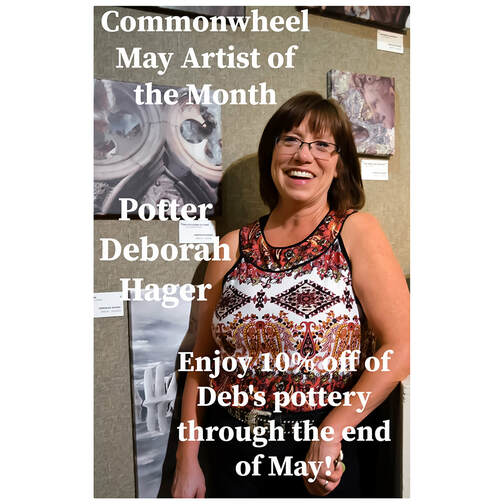







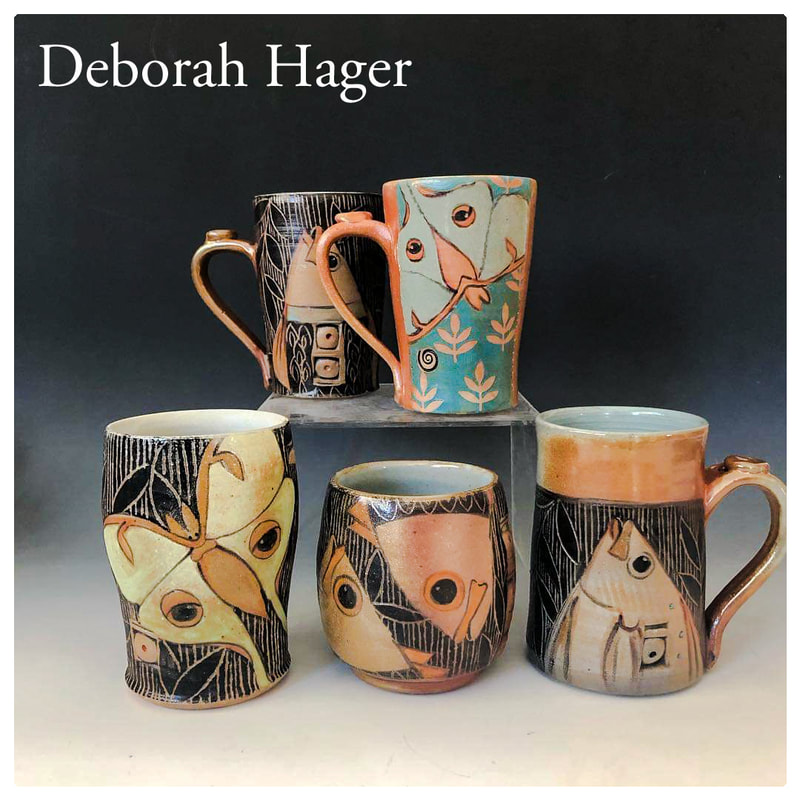


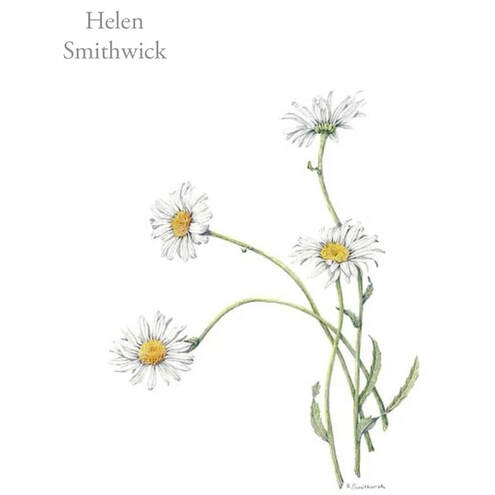
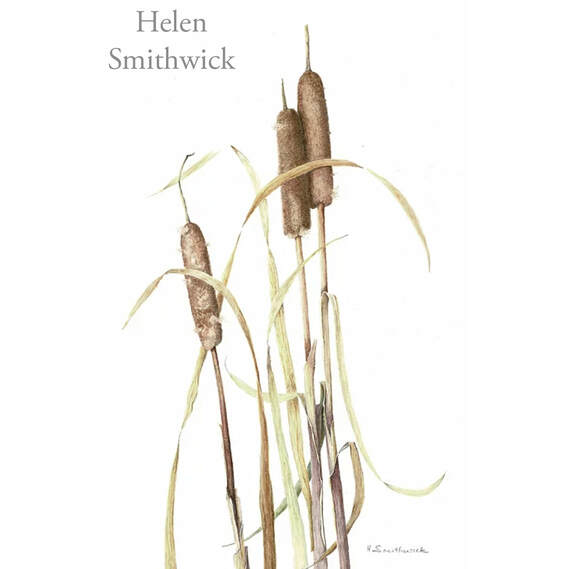







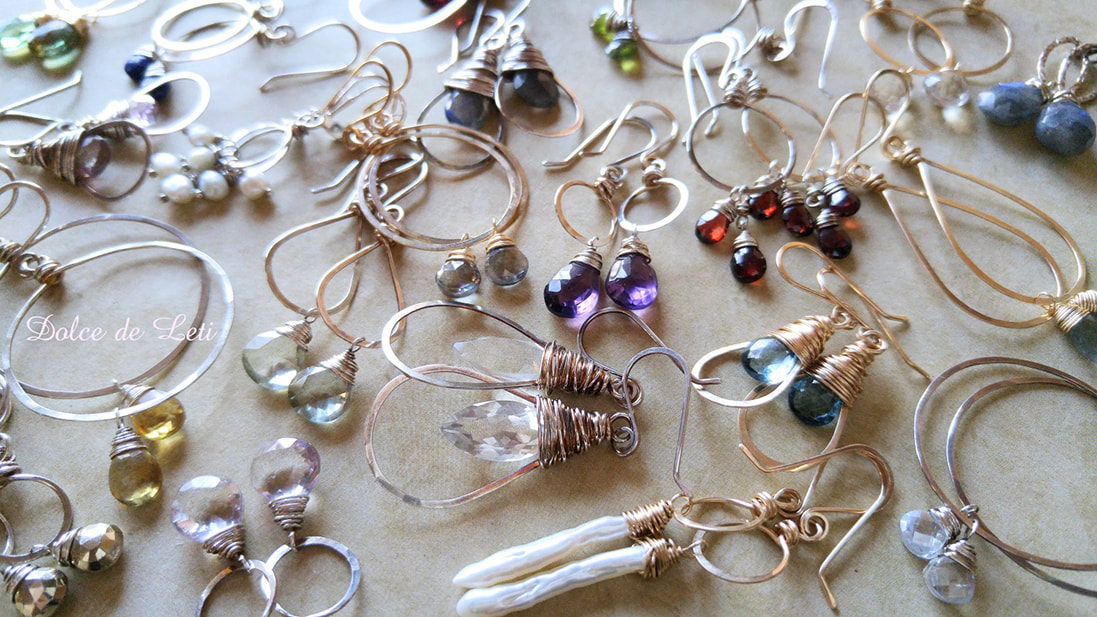

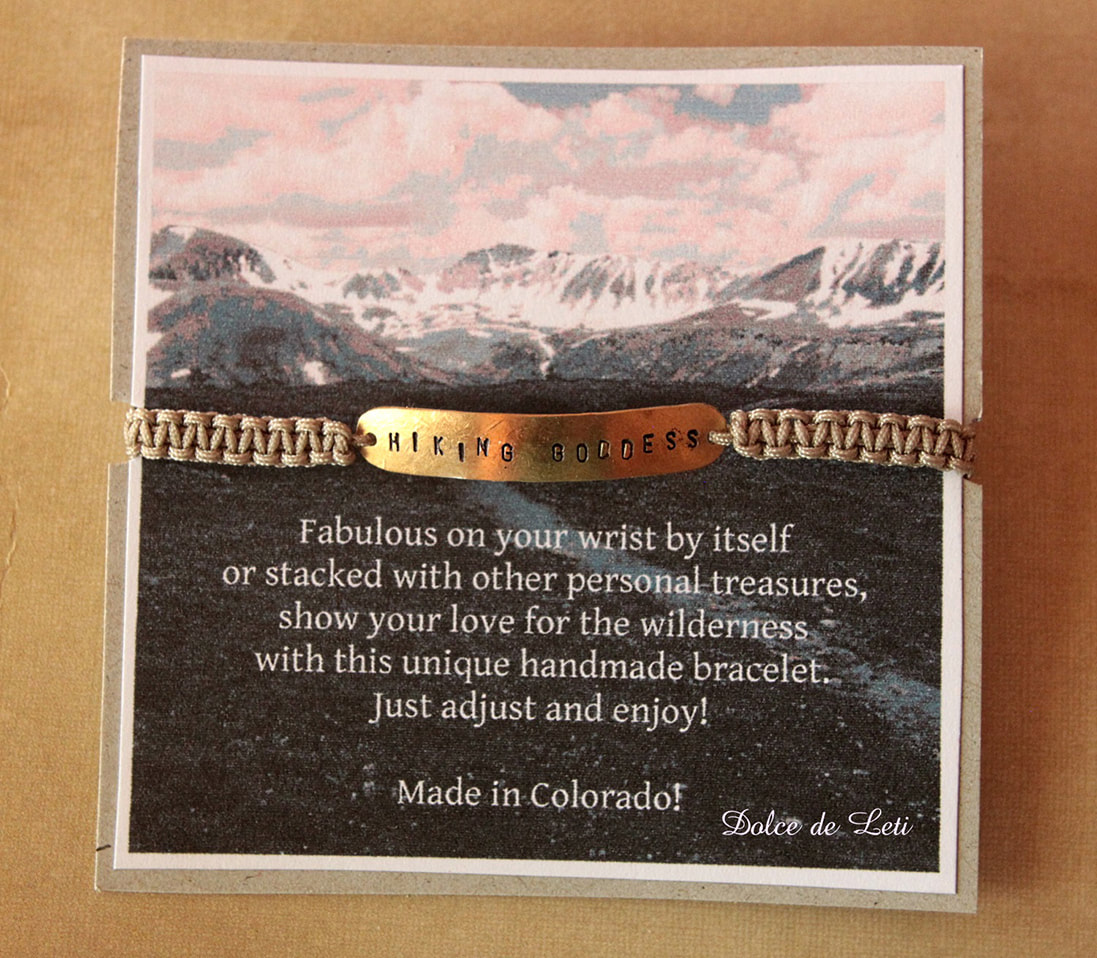

















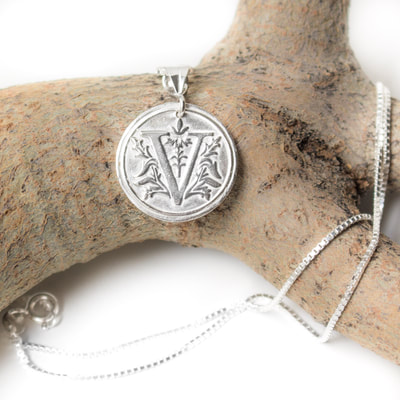
















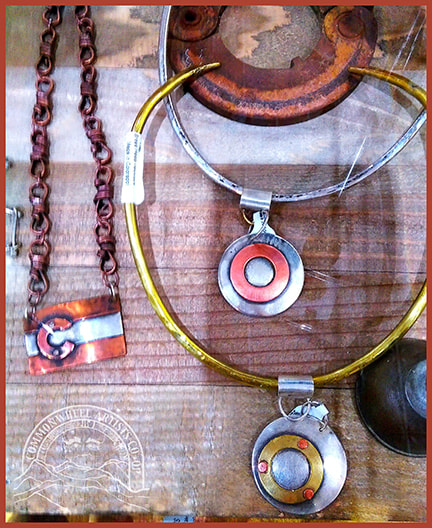






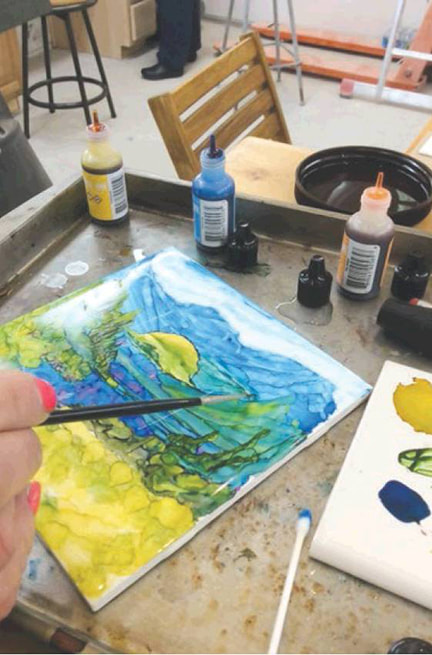


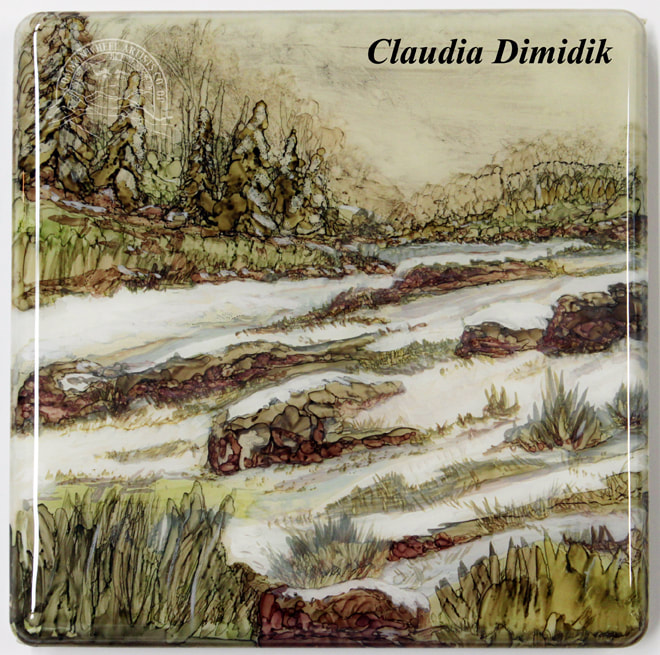


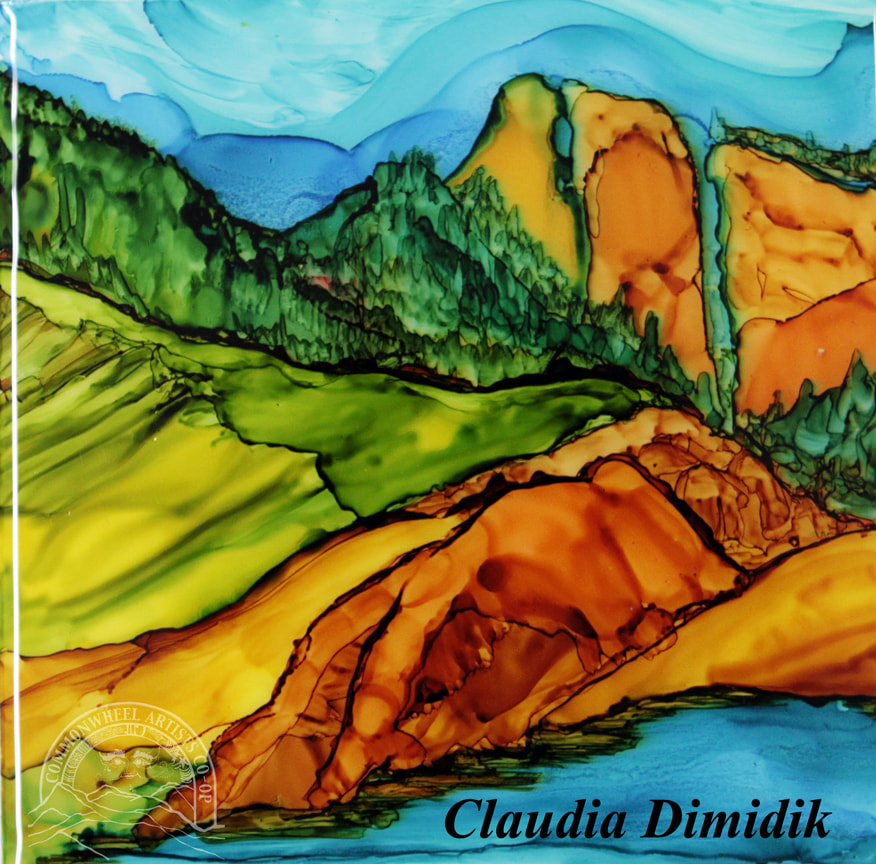






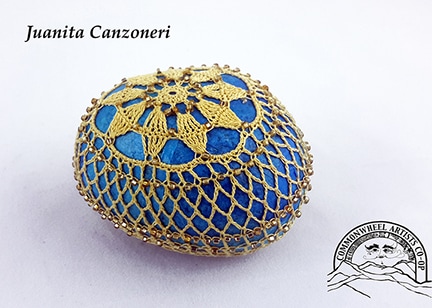
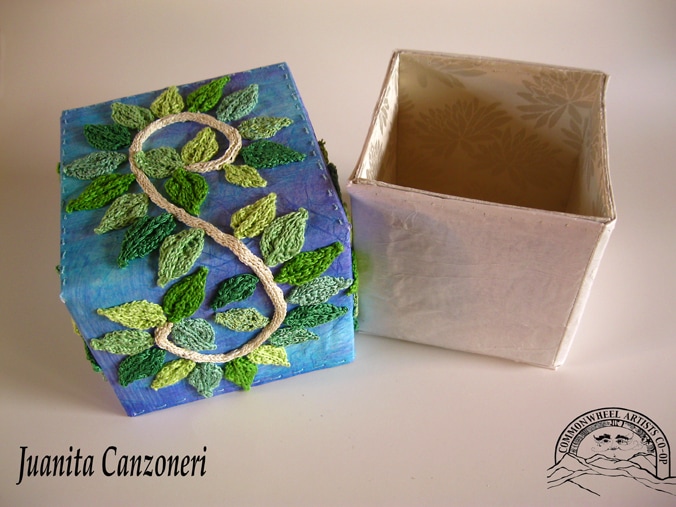




 RSS Feed
RSS Feed